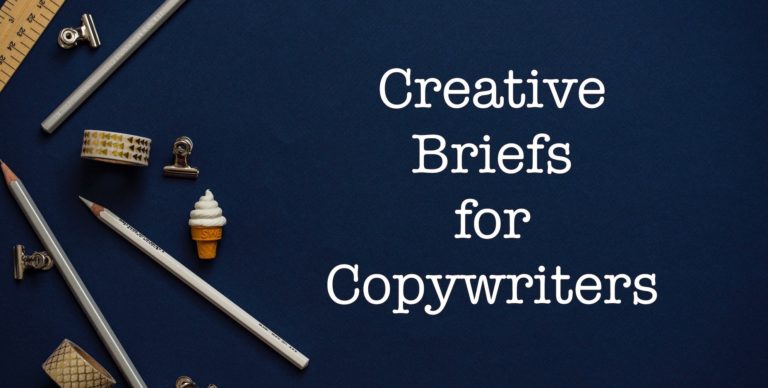As a copywriter, a crucial part of beginning any new copywriting project, particularly with a new client, is the creative brief.
Some copywriters take the creative brief before quoting, others do a shorter briefing to develop the quote which, once accepted, is followed by the detailed creative brief. Either way, it is an essential part of any copywriting project.
Why is the creative brief important?
-
It saves both you (the copywriter) and your client time later on
It gives you enough material to work from and ensures that the copy you write and send in as the first draft should be pretty close to what the client is looking for. Five minute briefings will leave you with very little to work with, making your job difficult and often leave the client disappointed at having to revise and revise again copy which “just isn’t what they were looking for”.
-
It provides you with important background information
This background info is so useful for getting tone of voice right in the copy, and for understanding the motivations behind a particular campaign or project.
Any writer who researches before putting pen to paper needs to know a lot more about the subject than will actually get put into the project, whether they are writing website copy, an academic paper, or a fictional novel. This background knowledge imbues the words with unmistakable authenticity.
To get the most out a creative brief, try these four ideas:
-
Ask open questions
That is, avoid posing questions for which an answer could be simply “yes” or “no”. Instead, using question-words like “Who”, “What”, “How” and “Why” to begin your sentences and then give the client plenty of time to think and to respond.
-
Dig deeper than simply the project at hand
Perhaps you are briefing a client because they have asked you to write the copy for their new company website. Great! While it is obviously important to ask questions about the website, it’s functionality, the tone of voice (more on how to get tone of voice right here), word counts and so forth, dig deeper. Ask questions about why the company started. Who will be the typical customer (sometimes called a ‘customer avatar’) who will use the website? What are the company’s unique values and standpoints?
Try to establish what makes this company and client unique, and weave this unique selling proposition into your copy.
-
Use ‘Why?’
“Why” is one of the best question-words mentioned in Number 1 above. It can be used to start a sentence. But it can also be used as a powerful standalone question.
If a client explains that their business makes cotton clothing using only organically grown cotton – ask why. If they say this is because using organic materials and living as sustainably as possible is important to them – ask why again (without sounding annoyingly repetitive!)
The answers will add to the material you have to work with when the time comes to write the copy and you will often find little hidden gems amongst the answers which arise when the conversation departed from the main purpose of the project.
-
Make it detailed
Yes, it is called a ‘brief’. But that doesn’t mean the conversation needs to be over in five minutes. In fact, a detailed creative briefing might go for 45 minutes to fully cover the ground needed. And yes, your client may find this a bit onerous but, as we mentioned earlier, it will save them time in the end which might have been wasted sending feedback on copy which has missed the mark for lack of substance. So get to the nitty gritty, get the detail.
On an additional note for copywriters – don’t forget to charge for the time spent on the creative brief. Include it in your quote!
Ultimately, it will make for better quality copy, and a happier client.

